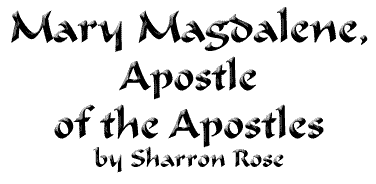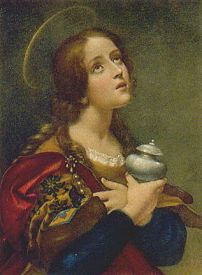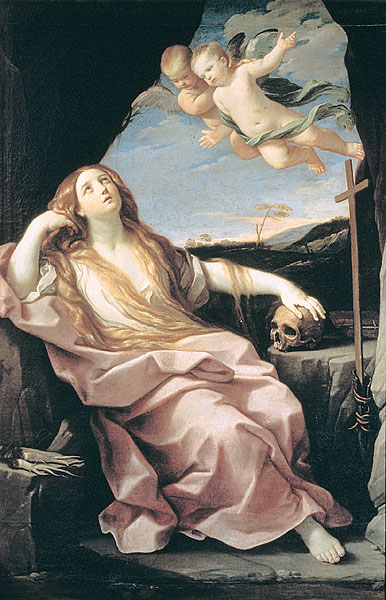
From
New Dawn Magazine
Special Issue No.2
"Revelations Beyond the Da Vinci Code"
The Gnostic Teachings
 It was during the Hellenistic period that the mystic knowledge
of Egypt, the great symbols, myths, astronomical, scientific
and metaphysical teachings passed into the heart of the
Mystery Schools of Greece and Rome, which included the
region of Gaul where Mary Magdalene is reported to have
lived and preached. These secret initiatory teachings of
the Egyptians were also retained and transmitted through
the inner circles of Judaism to Jesus himself. At the heart
of this lineage of transmission was an extraordinary metaphysical
teaching known as Gnosticism. This teaching is believed
to be the spiritual basis of his essential message to humanity,
a message revealed to Mary Magdalene, his disciples and
followers through the vehicles of metaphor, allegory and
parable. Unlike the patriarchal, dogmatic, materially based
teachings prevalent during this period, Gnosticism placed
primary value on the feminine qualities of receptivity,
intuitive perception, visionary experience and the art
of healing. It was a teaching of love, selflessness, harmony
and communion.
It was during the Hellenistic period that the mystic knowledge
of Egypt, the great symbols, myths, astronomical, scientific
and metaphysical teachings passed into the heart of the
Mystery Schools of Greece and Rome, which included the
region of Gaul where Mary Magdalene is reported to have
lived and preached. These secret initiatory teachings of
the Egyptians were also retained and transmitted through
the inner circles of Judaism to Jesus himself. At the heart
of this lineage of transmission was an extraordinary metaphysical
teaching known as Gnosticism. This teaching is believed
to be the spiritual basis of his essential message to humanity,
a message revealed to Mary Magdalene, his disciples and
followers through the vehicles of metaphor, allegory and
parable. Unlike the patriarchal, dogmatic, materially based
teachings prevalent during this period, Gnosticism placed
primary value on the feminine qualities of receptivity,
intuitive perception, visionary experience and the art
of healing. It was a teaching of love, selflessness, harmony
and communion.
The mystic experience of and communion with the essential
grace and majesty of Divinity lay at the heart of
this Gnostic transmission. The clear and immediate experience
of this awakening was known as 'gnosis' or
wisdom. Often translated from its Greek root as “knowledge”,
Gnosticism goes much deeper than merely intellectual understanding.
Like a brilliant flash of light arising from the darkness,
this understanding arises in the individual as a bright
lucid awareness -- an intuitive realization of the pure
essence, nature and energy of Divinity as it flows within
oneself, the luminous realms and all of creation. From
the Gnostic viewpoint, the answers to all of life's mysteries
can only be found when one “opens oneself to this
divine current and allows oneself to be penetrated by it
to the
point where one is fully transformed and illuminated by
it.”(2) From the viewpoint of many early Gnostic communities,
this divine current was perceived as the feminine, healing
and nurturing energy of God's Holy Spirit. .
 The fundamental doctrine of the Gnostics relates the dualistic
nature of the world in which we reside, the eternal struggle
between good and evil. They believed that Jehovah, the
wrathful god of the Old Testament was a false god and expression
of what they called the demiurge. For
how could a fully enlightened divinity contain within him
the base emotions of anger, jealousy and vengeance? For
them, the real God was a
The fundamental doctrine of the Gnostics relates the dualistic
nature of the world in which we reside, the eternal struggle
between good and evil. They believed that Jehovah, the
wrathful god of the Old Testament was a false god and expression
of what they called the demiurge. For
how could a fully enlightened divinity contain within him
the base emotions of anger, jealousy and vengeance? For
them, the real God was a
loving deity equally and directly accessible to all. This
God taught that love, compassion and the true sacrifice
and transformation of the self, or ego, was the highest
spiritual path.
The Gnostics believed that the plan of this demiurge, or Satan, was to trap spirit in matter, and that
the earth itself was a prison in which souls were exiled
from their divine home. For them, the real world was
the non-material world of spirit and all of their rituals
and practices were designed to purify them and provide
them with the means to find their way out of the impure
world of matter, darkness and suffering and return to
their true home in the Light.
Clearly, these sacred esoteric teachings were revolutionary.
Unlike the fixed, restrictive, hierarchical systems prevalent
during this period, these teachings were open to all, female,
male, rich, poor Jew or Pagan. This all-inclusive transmission
of teachings formerly reserved for the elite was at odds
with the practices of Orthodox Judaism and the emerging
Church of Rome. For once the seeker had been touched by
this Gnostic current, she or he came to recognize their
own divine nature and perceive their place in the world
from a whole new perspective. No longer did they need the
intercession of a priest or rabbi to connect them with
their spiritual inheritance. Evidence of Mary Magdalene's
primary role as disciple, visionary, mediatrix and herald
of these revolutionary teachings can be found in a number
of Gnostic texts. These include The Pistis Sophia, The Gospel of Phillip, The
Gospel of Mary and
more.
Previous -|-
Page 1 -|- Page 2 -|- Page
3 -|- Page 4 -|-Next



